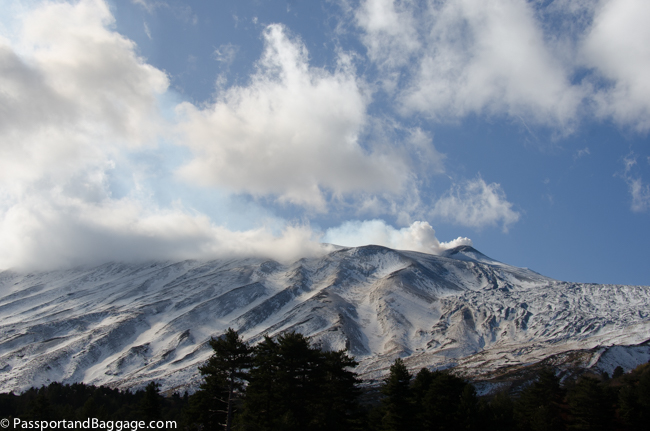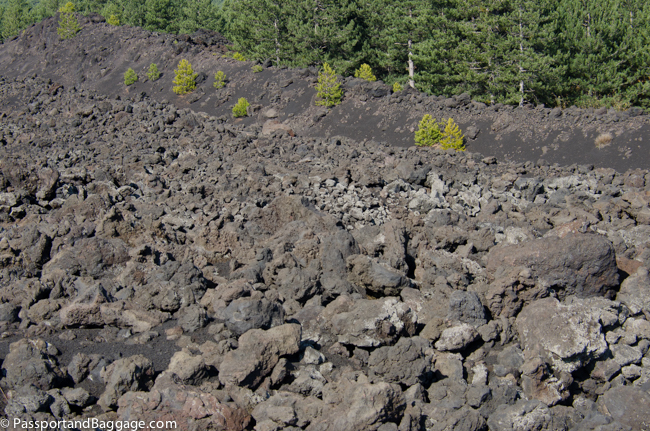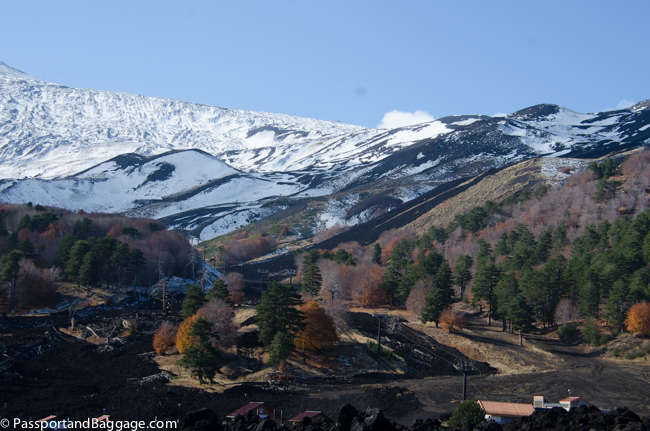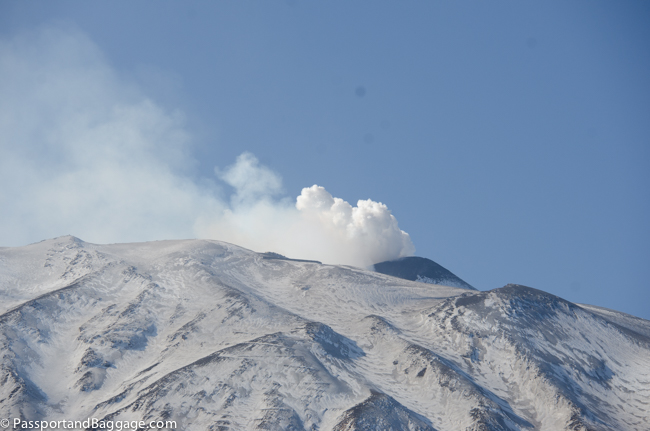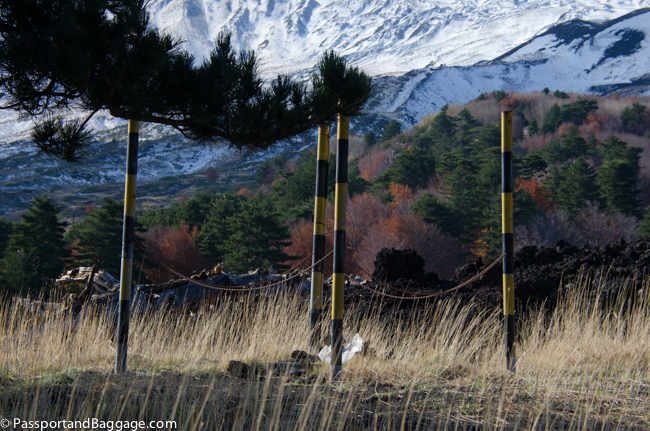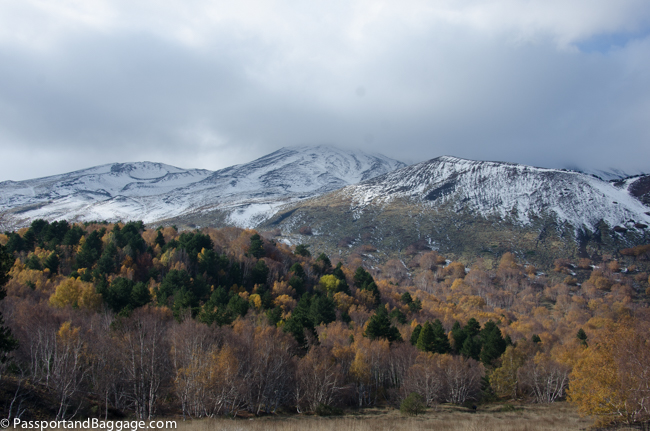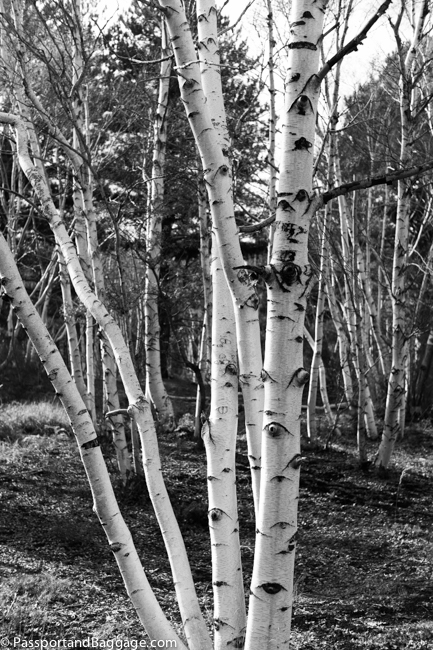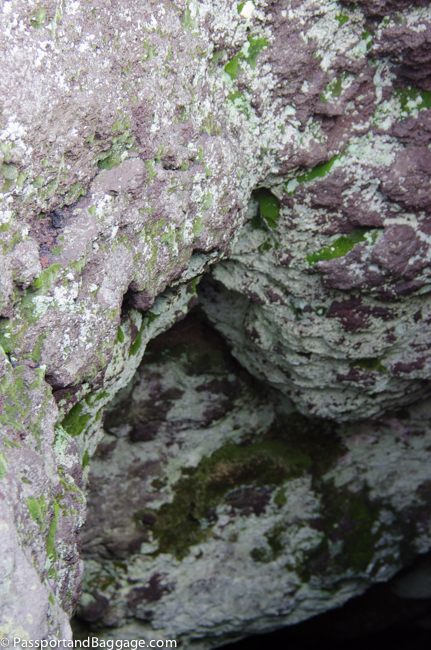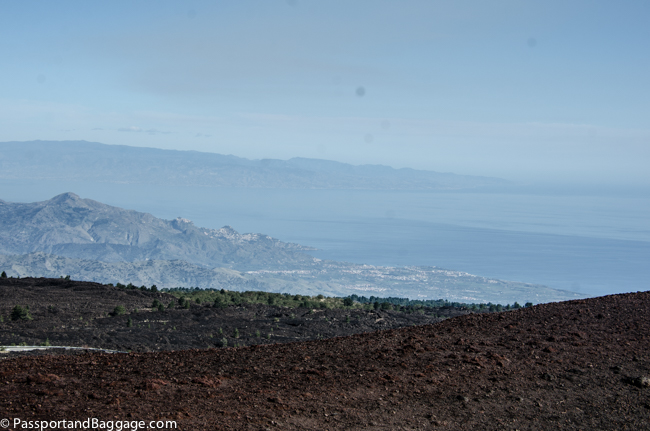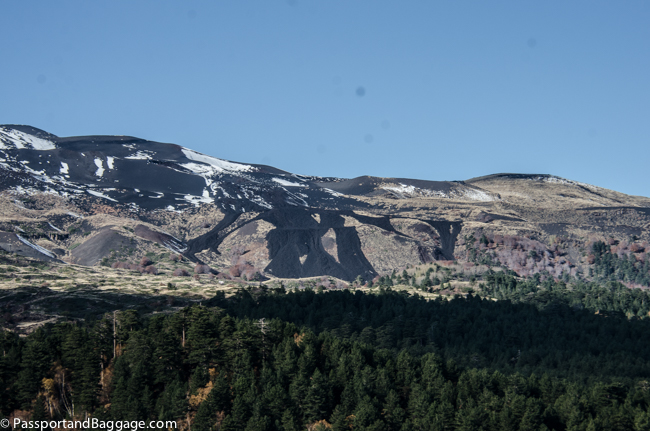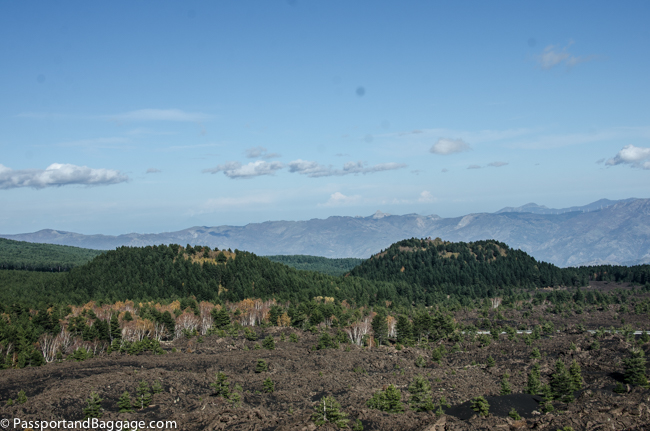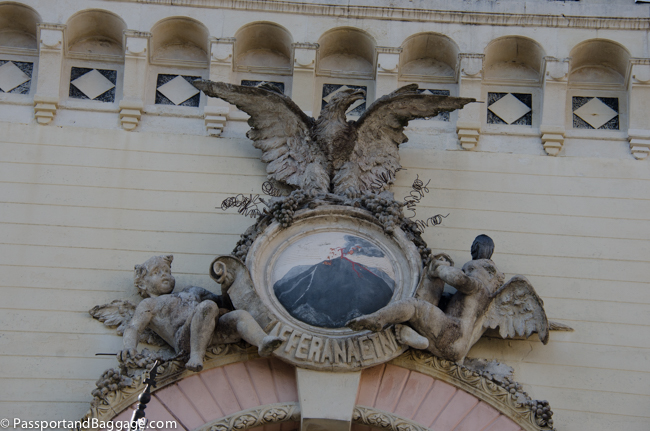November 22, 2019
A private tour with Davide, guide extraordinaire of Mount Etna Tours, was one of the most fascinating ways to spend a day in this extraordinary place.
Mount Etna is a stratovolcano. Stratovolcanoes are also called composite volcanoes because they are built of layers of alternating lava flow, ash, and blocks of unmelted stone. They are larger than cinder cones. Stratovolcanoes result from a conduit system of vents leading from a magma reservoir beneath the surface. When dormant, they typically have steep concave sides.
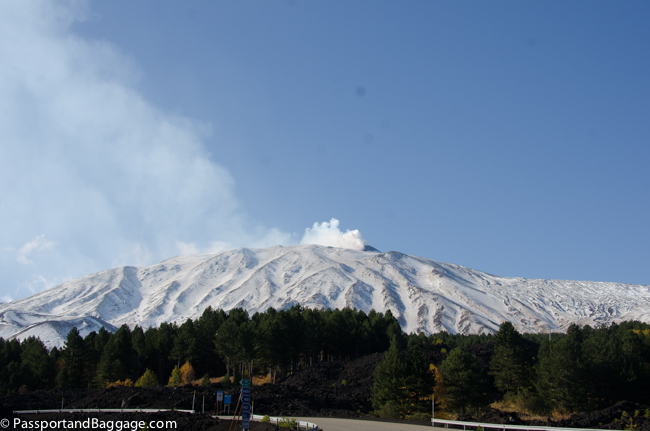 Stratovolcanoes can erupt with great violence. Pressure builds in the magma chamber as gases, under immense heat and pressure, are dissolved in the liquid rock. When the magma reaches the conduits the pressure is released and the gases explode, like soda spewing out of a soda can that you shook up and opened suddenly. Because they form in a system of underground conduits, stratovolcanoes may blow out the sides of the cone as well as the summit crater.
Stratovolcanoes can erupt with great violence. Pressure builds in the magma chamber as gases, under immense heat and pressure, are dissolved in the liquid rock. When the magma reaches the conduits the pressure is released and the gases explode, like soda spewing out of a soda can that you shook up and opened suddenly. Because they form in a system of underground conduits, stratovolcanoes may blow out the sides of the cone as well as the summit crater.
Stratovolcanoes are considered the most violent.
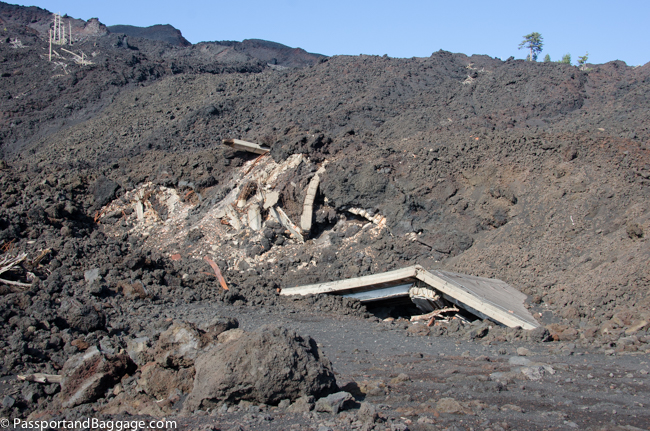
The restaurant at the ski resort destroyed by a lava flow in 2002, this loss caused a crash of the economy of this area that still has not recovered.
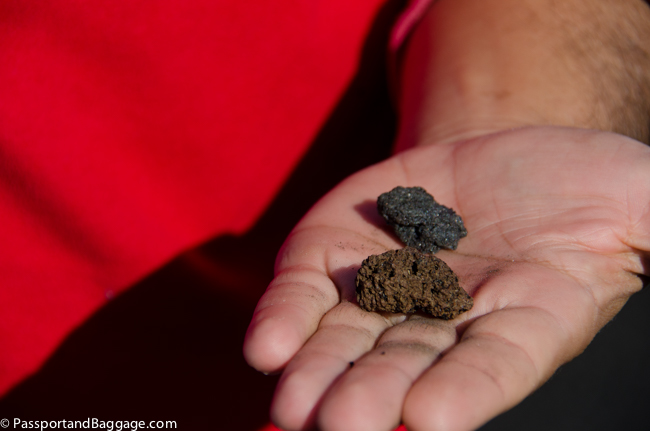
The reddish rock is lava, the black is actually compressed ash. The ash is rated by its size. Cenere is the smallest ash, Sabia is much like sand, the black stone shown above is Lapilli Stone, these are followed by Scorie and Blocchi
The first known record of an eruption at Etna is that of the ancient Greek historian Diodorus Siculus (born 90 BCE died 30BCE).
In 396 BCE, an eruption of Etna reportedly thwarted the Carthaginians in their attempt to advance on Syracuse during the Second Sicilian War.
A particularly violent explosive eruption occurred in 122 BCE and caused heavy tephra (rock fragments) to fall to the southeast, including the town of Catania, where many roofs collapsed. To help with reconstruction after the devastating effects of the eruption, the Roman government exempted the population of Catania from paying taxes for ten years.
The Roman poet Virgil gave what was probably a first-hand description of an eruption in the Aeneid.
During the first 1500 years CE, many eruptions went unrecorded (or records have been lost); among the more significant are: (1) an eruption in about 1030 CE near Monte Ilice (2) an eruption in about 1160 (or 1224), on the south-southeast flank near the village of Mascalucia, whose lava flow reached the sea just to the north of Catania.
Rabban Bar Sauma, a Chinese traveler to the West, recorded the eruption of Etna on June 18, 1287
Etna’s most destructive eruption since 122 BCE started on March 11, 1669, and produced lava flows that destroyed at least 10 villages on its southern flank before reaching the city walls of the town of Catania five weeks later. The lava was largely diverted into the sea by the city walls, filling the harbor of Catania. A small portion of lava eventually broke through a section of the city walls on the western side of Catania and destroyed a few buildings before stopping in the rear of the Benedictine monastery, without reaching the center of the town.
A study on the damage and fatalities caused by eruptions of Etna in historical times reveals that only 77 human deaths are attributable with certainty to eruptions of Etna, most recently in 1987 when two tourists were killed by a sudden explosion near the summit. The thousands of deaths reported during this time should be attributed to the earthquakes rather than the eruption of Mt. Etna.
A large lava flow from an eruption in 1928 led to the destruction of a population center for the first time since the 1669 eruption. The village of Mascali was almost completely destroyed in two days. Only a church and a few surrounding buildings survived. During the last days of the eruption, the flow interrupted the Messina-Catania railway line and destroyed the train station of Mascali. The event was used by Benito Mussolini’s fascist regime for propaganda purposes. Mussolini called on all of the neighboring villages to help with the evacuation, aid, and rebuilding operations and then presented this as a model of fascist planning. Mascali was rebuilt on a new site, and its church contains the Italian fascist symbol of the torch, placed above the statue of Jesus Christ.
Other major 20th-century eruptions occurred in 1949, 1971, 1979, 1981, 1983 and 1991–1993. In 1971, lava buried the Etna Observatory (built in the late 19th century), destroyed the first generation of the Etna cable-car, and seriously threatened several small villages on Etna’s east flank.
In March 1981, the town of Randazzo on the northwestern flank of Etna narrowly escaped destruction by unusually fast-moving lava flows. That eruption was remarkably similar to one in 1928 that destroyed Mascali. The 1991–1993 eruption saw the town of Zafferana threatened by a lava flow, but successful diversion efforts saved the town with the loss of only one building.
In 2002–2003, a large eruption threw up a huge column of ash that could easily be seen from space and fell as far away as Libya, 370 miles south across the Mediterranean Sea.
From January 2011 to February 2012, the summit craters of Etna were the site of intense activity. Frequent eruptions and ash columns forced the authorities to shut down the Catania airport on several occasions.
An eruption on March 16, 2017, injured 10 people, including a BBC News television crew, after magma exploded upon contact with the snow.
An eruption on December 24, 2018, following a dike intrusion at shallow depth, spewed ash into the air, forcing the closure of airspace around Mount Etna. Two days later, a magnitude 4.9 earthquake shook the nearby city of Catania, damaging buildings and injuring four people. There were over 600 earthquakes and due to those, over 200 people were displaced and have yet to return to their homes.
This is not a complete list of Etna’s explosions, simply the more dramatic ones.
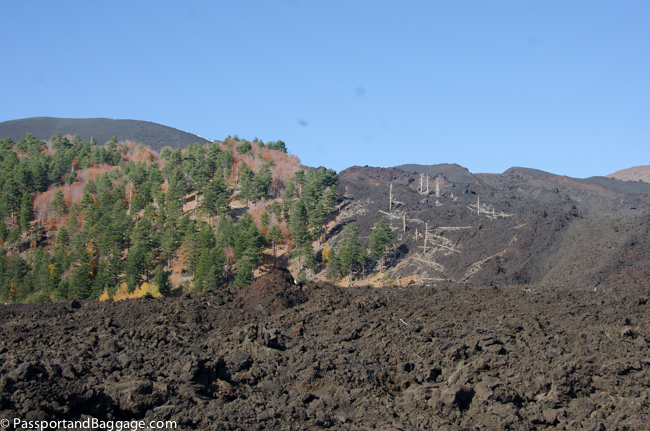
The lava temperature on Mt. Etna is 900 degrees centigrade while on Hawaii it is 1400 degrees centigrade, so the lava moves much slower here on Mt. Etna due to its lower temperature.
The growth that is seen on the mountain is found where ever there is ash and seeds can begin to germinate.
The birch, Betula Aetnensis, or Birch of Etna, can only be found on Mount Etna.
How it landed here is unclear and the subject of many a discussion. It is possible that they originated during the last glaciation or in the post ice age and due to the difficulty of finding other suitable climatic conditions, they have remained confined to Etna.
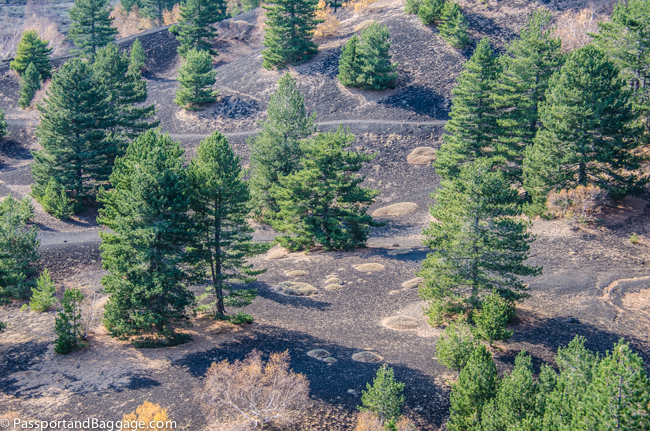
Etna Astragalus Siculus are the low lying plants found on the ground in circular patterns around Mt. Etna.
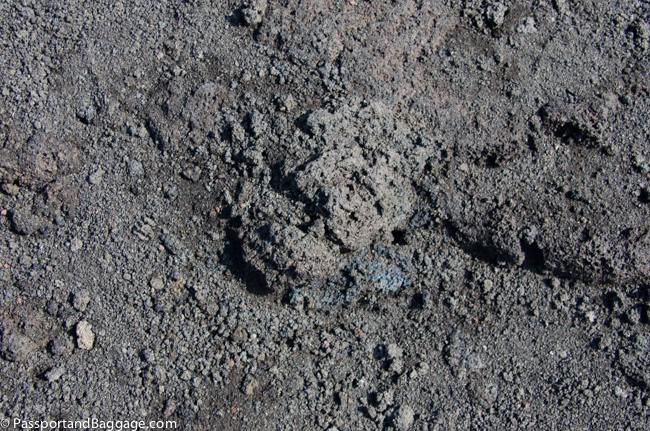
The blue in the middle of the photo is copper sulfite and was on the walk up one of the extinct craters

A hole in an extinct caldera that is about 10 feet deep. It was a result of a sudden outrush of lava, most likely due to seismic activity in the immediate area.
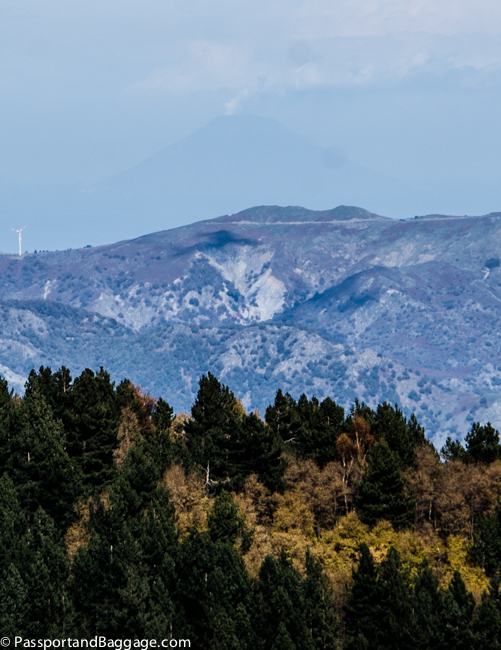
The sky was so clear one could see Stromboli. It is in the center of the photo and has a steam plume coming out of its top. Stromboli has been in a state of nearly continuous, mild eruption since early Roman times. At night, sailors in the Mediterranean can see the glow from the fiery molten material. Therefore, Stromboli has been called “the lighthouse of the Mediterranean.
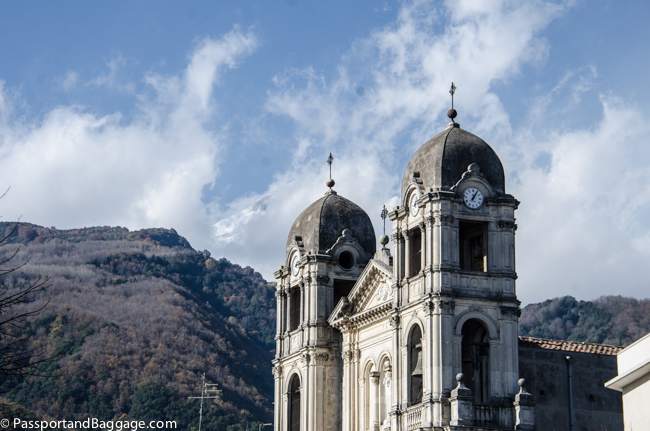
Mount Etna peeking out over the bell towers of the Church of Santa Maria della Provvidenza in the town of Zafferana
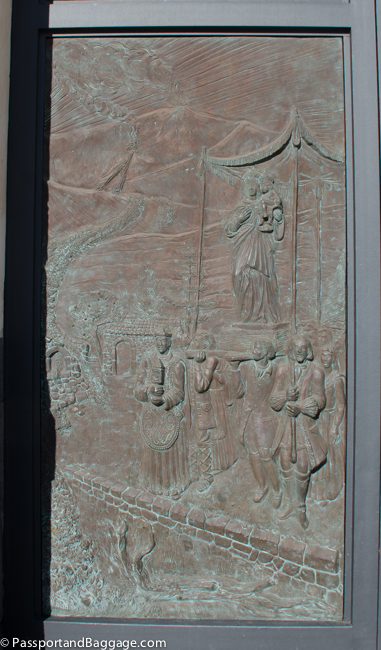
The bronze doors of the cathedral depict a scene from the eruption of 1792 where, according to legend, Santa Maria della Provvidenza helped to stop the flow of lava.
While the volcanic activity of Etna is impressive, the volcanic activity of the entire area is changing. In 2019 geophysicists found 6 underwater volcanoes previously unknown.
An interesting little clip of the 1923 disaster:
